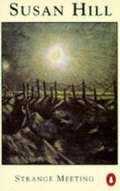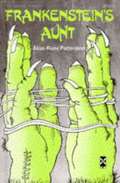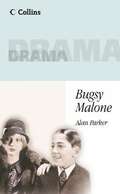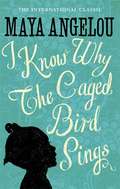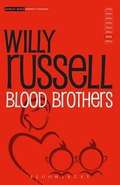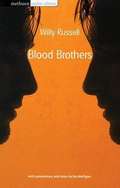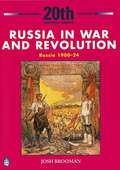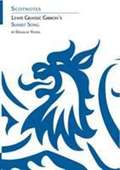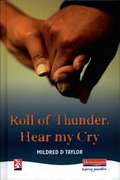- Table View
- List View
Rotation
This diagram shows three triangles; the original triangle and its rotation in two different directions to two new positions. A locator dot and title are shown. These must always be at the top left of the page when the image is the right way up. There is a graph with all four quadrants showing, and the x and y axes ranging from -3 to 3. The x and the y axes intersect at the origin marked by an X. Axes values are positive to the right and to the top of the diagram. Axes values are negative to the left and to the bottom of the diagram. Not all axis division marks are labelled. Some of the braille uses maths code notation. When an object is rotated it stays the same shape but its position and orientation change. The original triangle is in the top left quadrant. The triangle rotated 90? clockwise is to the right. The triangle rotated 180? anticlockwise is shown in the bottom right quadrant. Their path of movement is indicated by curved heavy dashed arc lines. Note the 90? arc in the top right quadrant is broken in the tactile version of the graph to allow a braille label to be clearly read.
Similarity
This diagram consists of two pairs of similar shapes; the two in the middle of the page are similar and the bottom two are also similar. A locator dot and title are shown. These must always be at the top left of the page when the image is the right way up. Similarity is a type of enlargement. The corresponding sides are in the same ratio - the ratio is the scale factor of the enlargement.
Similarity
This diagram consists of two pairs of similar shapes; the two in the middle of the page are similar and the bottom two are also similar. A locator dot and title are shown. These must always be at the top left of the page when the image is the right way up. Similarity is a type of enlargement. The corresponding sides are in the same ratio - the ratio is the scale factor of the enlargement.
Similarity
This diagram consists of two pairs of similar shapes; the two in the middle of the page are similar and the bottom two are also similar. A locator dot and title are shown. These must always be at the top left of the page when the image is the right way up. Similarity is a type of enlargement. The corresponding sides are in the same ratio - the ratio is the scale factor of the enlargement.
Structure of a long bone (Large Print)
This page has two images of a long bone (human thigh bone) with the hip end at the top of the page, and the knee end at the bottom of the page. A locator dot and title are shown. These must always be at the top left of the page when the image is the right way up. The image on the left is a cross section, and the image on the right is the external appearance. The image on the left shows the internal structure and contents of the bone. It is like a tube with hard, strong bone forming the wall of the tube. Each end is filled with a lighter bone which is not quite as strong. The middle is filled with the soft marrow. Both images show the cartilage at the ends which make the joint smooth.
Structure of a long bone (UEB Contracted)
This page has two images of a long bone (human thigh bone) with the hip end at the top of the page, and the knee end at the bottom of the page. A locator dot and title are shown. These must always be at the top left of the page when the image is the right way up. The image on the left is a cross section, and the image on the right is the external appearance. The image on the left shows the internal structure and contents of the bone. It is like a tube with hard, strong bone forming the wall of the tube. Each end is filled with a lighter bone which is not quite as strong. The middle is filled with the soft marrow. Both images show the cartilage at the ends which make the joint smooth.
Structure of a long bone (UEB Uncontracted)
This page has two images of a long bone (human thigh bone) with the hip end at the top of the page, and the knee end at the bottom of the page. A locator dot and title are shown. These must always be at the top left of the page when the image is the right way up. The image on the left is a cross section, and the image on the right is the external appearance. The image on the left shows the internal structure and contents of the bone. It is like a tube with hard, strong bone forming the wall of the tube. Each end is filled with a lighter bone which is not quite as strong. The middle is filled with the soft marrow. Both images show the cartilage at the ends which make the joint smooth.
Translation
This diagram shows three triangles; the original triangle and its translation in two different ways to two new positions. A locator dot and title are shown. These must always be at the top left of the page when the image is the right way up. There is a graph with all four quadrants showing, and the x and y axes ranging from -3 to 3. The x and the y axes intersect at the origin marked by an O. Axes values are positive to the right and to the top of the diagram. Axes values are negative to the left and to the bottom of the diagram. Not all axis division marks are labelled. Some of the braille uses maths code notation. When a shape is translated, it stays the same shape and orientation; only its position changes. The original triangle is in the top left quadrant. There is a translation to the right of a value of 4, and then a translation down of a value of 1. There is also a second translation, right to a value of 4, and then down to a value of 4. The movement of the first triangle is indicated by a heavy dashed line.
Translation
This diagram shows three triangles; the original triangle and its translation in two different ways to two new positions. A locator dot and title are shown. These must always be at the top left of the page when the image is the right way up. There is a graph with all four quadrants showing, and the x and y axes ranging from -3 to 3. The x and the y axes intersect at the origin marked by an O. Axes values are positive to the right and to the top of the diagram. Axes values are negative to the left and to the bottom of the diagram. Not all axis division marks are labelled. Some of the braille uses maths code notation. When a shape is translated, it stays the same shape and orientation; only its position changes. The original triangle is in the top left quadrant. There is a translation to the right of a value of 4, and then a translation down of a value of 1. There is also a second translation, right to a value of 4, and then down to a value of 4. The movement of the first triangle is indicated by a heavy dashed line.
Velocity-time graph
On this page there is a graph showing velocity plotted against time. There is a locator dot shown, which will be at the top left of the page when the image is the right way up. The y-axis (velocity) is a line that extends vertically down the left-hand side of the page. Three-quarters of the way down the page, it meets the line of the x-axis (time) at a point marked with a zero (the origin). The x-axis extends horizontally across the page. A thick dashed line, which starts at the origin and goes up and down the page to the right, indicates various stages of velocity against time. Leader lines point from the plotted line to labels indicating these stages of travel.
Velocity-time graph
On this page there is a graph showing velocity plotted against time. There is a locator dot shown, which will be at the top left of the page when the image is the right way up. The y-axis (velocity) is a line that extends vertically down the left-hand side of the page. Three-quarters of the way down the page, it meets the line of the x-axis (time) at a point marked with a zero (the origin). The x-axis extends horizontally across the page. A thick dashed line, which starts at the origin and goes up and down the page to the right, indicates various stages of velocity against time. Leader lines point from the plotted line to labels indicating these stages of travel.
Velocity-time graph
On this page there is a graph showing velocity plotted against time. There is a locator dot shown, which will be at the top left of the page when the image is the right way up. The y-axis (velocity) is a line that extends vertically down the left-hand side of the page. Three-quarters of the way down the page, it meets the line of the x-axis (time) at a point marked with a zero (the origin). The x-axis extends horizontally across the page. A thick dashed line, which starts at the origin and goes up and down the page to the right, indicates various stages of velocity against time. Leader lines point from the plotted line to labels indicating these stages of travel.
Strange Meeting (PDF)
by Susan HillYoung officer John Hilliard returns to his battalion in France following a period of sick leave in England. Despite having trouble adjusting to all the new faces, the stiff and reserved Hilliard forms a friendship with David Barton, an open and cheerful new recruit who has still to be bloodied in battle. As the pair approach the front line, to the proximity of death and destruction, their strange friendship deepens. But each knows that soon they will be separated ...
Frankenstein's Aunt
by Allan Rune Pettersson Translated By Tate JoanOne of a series of fiction for schools, this is an horror story based on the Frankenstein legend. When Aunt Frankenstein arrives at the castle of her nephew, who created the monster, to restore that place to order and clear the family's blackened name, she encounters both Dracula and the werewolf and attempts to solve their problems too.
Frankenstein's Aunt
by Allan Rune Pettersson Translated By Tate JoanOne of a series of fiction for schools, this is an horror story based on the Frankenstein legend. When Aunt Frankenstein arrives at the castle of her nephew, who created the monster, to restore that place to order and clear the family's blackened name, she encounters both Dracula and the werewolf and attempts to solve their problems too.
I Know Why the Caged Bird Sings (PDF)
by Maya AngelouMaya Angelou's six volumes of autobiography are a testament to the talents and resilience of this extraordinary writer. Loving the world, she also knows its cruelty. As a Black woman she has known discrimination and extreme poverty, but also hope, joy, achievement and celebration. In this first volume of her six books of autobiography, Maya Angelou beautifully evokes her childhood with her grandmother in the American south of the 1930s. She learns the power of the white folks at the other end of town and suffers the terrible trauma of rape by her mother's lover.nbsp;
Blood Brothers
by Willy RussellA Liverpudlian West Side Story: twin brothers are separated at birth because their mother cannot afford to keep them both. She gives one of them away to wealthy Mrs Lyons and they grow up as friends in ignorance of their fraternity until the inevitable quarrel unleashes a blood-bath. 'Willy Russell is less concerned with political tub-thumping than with weaving a close-knit story about the working of fate and destiny. It carries one along with it in almost unreserved enjoyment Guardian One of the longest-running and most successful ever West End musicals , Blood Brothers premiered at the Liverpool Playhouse in January 1983.
Blood Brothers - A Musical (Methuen Drama Student editions) (PDF)
by Willy RussellA Liverpudlian West Side Story, Blood Brothers is the story of twin brothers separated at birth because their mother cannot afford to keep them both. One of them is given away to wealthy Mrs Lyons and they grow up as friends in ignorance of their fraternity until the inevitable quarrel unleashes a blood-bath.nbsp;
Blood Brothers (PDF)
by Willy RussellA Liverpudlian West Side Story: twin brothers are separated at birth because their mother cannot afford to keep them both. She gives one of them away to wealthy Mrs Lyons and they grow up as friends in ignorance of their fraternity until the inevitable quarrel unleashes a blood-bath. 'Willy Russell is less concerned with political tub-thumping than with weaving a close-knit story about the working of fate and destiny. It carries one along with it in almost unreserved enjoyment Guardian One of the longest-running and most successful ever West End musicals , Blood Brothers premiered at the Liverpool Playhouse in January 1983.
The Crucible: A Play In Four Acts (Modern Classics Ser.)
by Arthur MillerArthur Miller's classic parable of mass hysteria draws a chilling parallel between the Salem witch-hunt of 1692 - 'one of the strangest and most awful chapters in human history' - and the McCarthyism which gripped America in the 1950s. The story of how the small community of Salem is stirred into madness by superstition, paranoia and malice, culminating in a violent climax, is a savage attack on the evils of mindless persecution and the terrifying power of false accusations.
Russia in War and Revolution: Russia 1900-24
by Josh BroomanRussia in War and Revolution: Russia 1900-24 is part of the series Longman 20th Century History for 14-16 year olds.
Sunset Song (Scotnotes Ser. #No. 1)
by Douglas YoungSunset Song regularly appears in lists of favourite Scottish books, and is perhaps the iconic Scottish novel of the first half of the 20th century. Rich in character and detail, and filled with religious, historical and political themes, Sunset Song is a deep, powerful work which rewards close attention and study. Douglas Young’s Scotnote provides readers with an authoritative analysis of the novel, and an overview of the political and historical background to its creation. This is an ideal guide for school pupils and students studying Sunset Song.
Roll of Thunder, Hear My Cry
by Mildred Taylor David Stone John LawMississippi in the 1930s is a harsh place for a young black girl. Cassie's mother tells her '... nobody no matter what colour, is better than anybody else'. Asserting her equality however would mean endangering family and friends. Cassie learns the truth of a bitter situation and the inner strength and conviction of her mother's words must sustain her despite what she sees around her. Newbury Award winner. Written by senior examiners to meet the AQA/B specification, this text aims to help both higher and foundation students develop skills needed for the exam. It has sample questions, guidance on how to answer them and practical advice on how the exam will be marked and what examiners are looking for.
Roll of Thunder, Hear My Cry (PDF)
by Mildred Taylor David Stone John LawMississippi in the 1930s is a harsh place for a young black girl. Cassie's mother tells her '... nobody no matter what colour, is better than anybody else'. Asserting her equality however would mean endangering family and friends. Cassie learns the truth of a bitter situation and the inner strength and conviction of her mother's words must sustain her despite what she sees around her. Newbury Award winner. Written by senior examiners to meet the AQA/B specification, this text aims to help both higher and foundation students develop skills needed for the exam. It has sample questions, guidance on how to answer them and practical advice on how the exam will be marked and what examiners are looking for.

